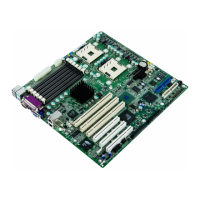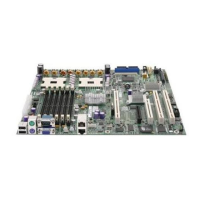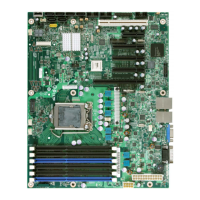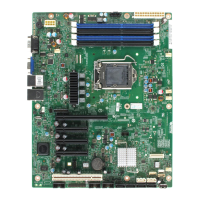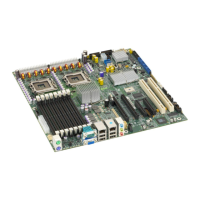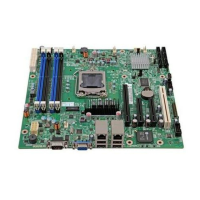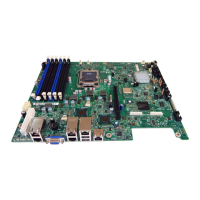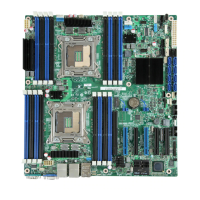SE7500CW2 Server Board Technical Product Specification System BIOS
49
Revision 1.40
8) Execute A:> 2.bat
9) There are two ways to update Flash Memory or System BIOS.
A) The first is to highlight the option that reads “Update Flash Memory from a File”
and press <Enter>.
B) At the screen that asks you to enter the name of the file select BIOS.ROM and press
<Enter>.
10) The second is to highlight the option that reads “Update System BIOS” and press
ENTER. The system will give you a warning that BIOS is about to be updated. Verify the
BIOS version is correct and press <Enter> to continue.
11) Once the BIOS has been successfully loaded, remove the floppy diskette from the drive.
Press ENTER at the prompt to reboot the system, or power off and power on.
Note: The BIOS DOS Boot disk must be a non-HIMEM management environment
BIOS flash updates all CMOS information with the exception of the baseboard, CMOS Custom
Defaults and some SMBIOS items like serial number and product code.
6.4.1.2 Splash Screen Update
The baseboard includes an area in flash for implementation-specific OEM. Splash Screen
update. With this functionality, user can update his/her own splash screen. See section 6.3.7.1
for more details.
6.4.1.3 BIOS Recovery Mode
If BIOS image is corrupt, or if an update to the system BIOS is not successful, or if the system
fails to complete POST and is unable to boot an operating system, it may be necessary to run
the BIOS recovery procedure.
Note: BIOS Recovery Mode supports onboard VGA Video.
There are 2 ways to enter the Recovery Mode – Automatic Detection Mode and Force Mode
1) Automatic Detection Recovery Mode:
a. Create a bootable BIOS recovery diskette form the crisis.zip file
available on the http://support.intel.com website for the SE7500CW2
board.
b. Insert the BIOS recovery floppy into the diskette drive.
c. Reboot the system.
d. At this point you will hear one long beep followed by two short beeps.
e. The beeping sequence will repeat while BIOS attempts to read the
recovery diskette.
f. Follow any instructions from the recovery diskette. If successful the
recovery diskette will notify you when completed.

